Adrian Collins's Blog, page 150
November 22, 2021
REVIEW: Angels of Death E7: The Honour of Angels
Angels of Death just keeps getting better and better with Episode 7 Honour of Angels driving three of the four storylines—Anacaeus and his embattled squad, Captain Orpheo and the Magos, and the Tyranid cult Magus—forward in excellent leaps.
Anacaeus and his brothers continue to forge towards the tower where they believe Captain Orpheo awaits them. Kazarion is struggling with The Black Rage, the affliction all Blood Angels must keep at bay that turns them into psychotic, uncontrollable berserkers, but seems to have it somewhat under control—though his actions causing the death of the squad chaplain are still yet to really be addressed.
Captain Orpheo remains paralysed on a table as the Machanicus Magos explains both the afflictions of his body from his wounds and her plan for the Blood Angels. It’s an interesting way forward, mixing a kind of archaeological importance in with the general requirement for killing the Cult. It’s very on tune for the 40k fluff and stories I grew up reading, and I like it.
The Tyranid cult Magus is reporting to his superior, and I think it gives a really cool insight into the hive mind, in that no matter who you are, there is always another creature bigger and scarier than you. They are not too dissimilar to the Imperium of Man in this way. As part of this arc we’re also shown the master plan of the arc, showcased with some naval armsmen in a desperate fight to prevent the cult and genestealers from getting to the bridge—one of the key worries for The Sword of Baal we were left with from the last episode.
There is plenty to like in Honour of Angels, with two major story arcs colliding, plenty of desperate battles, and insights into where this story is going for the big final confrontation. Seeing some of the big bad Tyranids coming onto screen (as opposed to the just the mutating humans) is really cool. The animator is bringing these creatures from the tabletop and rulebooks to life magnificently. Bring on episode 8.
You can find the rest of our reviews for this brilliant series here.
Watch Angels of Death E7: The Honour of AngelsThe post REVIEW: Angels of Death E7: The Honour of Angels appeared first on Grimdark Magazine.
November 21, 2021
REVIEW: Trailer Park Trickster by by David R. Slayton
Let me introduce you to one of my favorite series from last year, the Adam Binder, and the newest book in the series, Trailer Park Trickster.
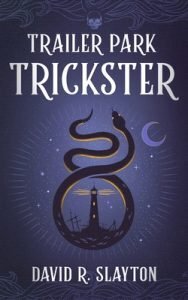 In the first novel of the series, White Trash Warlock, we are introduced to the titular character Adam Binder. Adam is a sensitive, one who is aware of the other side of things. The existence of magic, elves, and evils that come from that side of the coin. This sensitivity rules his life, and he tries to work around it, but he is often overwhelmed by the energies and feelings of masses of people.
In the first novel of the series, White Trash Warlock, we are introduced to the titular character Adam Binder. Adam is a sensitive, one who is aware of the other side of things. The existence of magic, elves, and evils that come from that side of the coin. This sensitivity rules his life, and he tries to work around it, but he is often overwhelmed by the energies and feelings of masses of people.
His brother has him committed to a facility, mainly in a misguided attempt to help him, but also because the things that adam believes are scary and might be true. This obviously causes a strain on the relationship between the brothers. Something dark and murderous possesses Bobby’s wife, Adam comes to Colorado from rural Oklahoma to see if he can help. Despite the divide between his family and him and the way he is treated.
This dark thing that is infecting people in the city is a power unlike anything Adam has ever seen, and to survive, he must call on energies above his paygrade. Plus, there is a great love triangle and banter with immortals of all sorts. It is an engaging urban fantasy that has some comfortable tropes that you find in urban fantasy, but author David Slayton has a way of making things seem very fresh.
All of this takes us right to the sequel, Trailer Park Trickster. Adam is reunited with his family after much pain and turmoil. All are completely changed from the events in the first book, but none more so than Adam’s brother, Bobby. The story picks up with Adam returning home to Guthrie, Oklahoma. He has suffered a significant loss that has set him adrift.
This brings me to what I think is the central theme of this story, being lost and untethered. Both Adam and Vic have had some great upheavals in their lives. Adam is trying to find what to do after his great loss, and Vic is trying to make sense of his new life and connection to Adam. It doesn’t help that Adam is a terrible communicator, which leaves Vic even more in the dark.
“Just remember, it’s always darkest right before it goes pitch black.”
Also, to make things more confusing for Adam, Trailer Park Trickster’s antagonist is a dark druid whose identity is one of the great mysteries to be solved. The druid is picking off Adam’s family members one by one. Adam does not have many family members, and those he does have he holds dear for the most part. This allowed Slayton to fill in some essential backstory elements that enriched Adam’s history. I loved learning about his world, painful as it is. It rounded out Adam even more for me as a protagonist.
While Adam is dealing with his part of the story and the dark druid, Vic has a challenging time with Argent, the Queen of swords. I like Argent as a character, but this section did feel a bit flat to me. It might be because I enjoy Argent and Vic together as a team, and separated didn’t give me the same bang. Their relationship was a wonderful part of the first book, and I look forward to exploring their complicated story in future books.
The Adam Binder series is fast shaping up to be one of my favorite urban fantasy series. Adam’s story has a lot of heart. You wouldn’t think of him as a leading man-type character you find in famous urban fantasy series. Dresden, as much as I love you, I am looking at you. Adam isn’t snarky, and he doesn’t need to be. He is heartfelt, and I respect and want to learn more about his determination and quiet resilience.
Read Trailer Park Trickster by by David R. Slayton
The post REVIEW: Trailer Park Trickster by by David R. Slayton appeared first on Grimdark Magazine.
REVIEW: The Wheel of Time E1: The Chosen Ones
Robert Jordan’s epic fantasy series begins its TV journey as The Wheel of Time follows the path of Game of Thrones and blast onto the small screen with high expectations and a big budget. The series’ premiere The Chosen Ones gives fans an insight into what to expect for the first season as four commoners are told by a strange sorceress that one of them could be the Dragon Reborn, the reincarnation of a powerful figure who caused the breaking of the world years ago. For fantasy fans, even ones who have not read the source material, the episode is comforting in its familiarity.
‘ware spoilers, herein, reader.
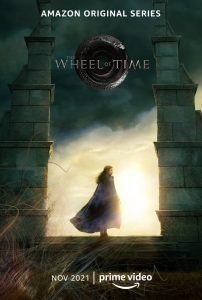 The Chosen Ones starts with a voiceover from Rosamund Pike’s Moiraine. Echoes of Galadriel are clear as she narrates the opening of the tale. Moiraine, a powerful member of the magical Aes Sedai (similar to Dune’s Bene Gesserit) searches for the chosen one in Two Rivers as we watch fellow members of her all-female order chase a worried man who has accessed magic forbidden to men. Based on the first part of Jordan’s series, The Eye of the World, this first episode makes a few changes to the source material that longtime fans may grumble about. The age of the main characters is perhaps the most obvious change. Aging up the The Wheel of Time’s protagonists may cause a disconnect with the naivety and innocence of the characters seen in the books but it’s only episode one so more time is needed to evaluate the decision.
The Chosen Ones starts with a voiceover from Rosamund Pike’s Moiraine. Echoes of Galadriel are clear as she narrates the opening of the tale. Moiraine, a powerful member of the magical Aes Sedai (similar to Dune’s Bene Gesserit) searches for the chosen one in Two Rivers as we watch fellow members of her all-female order chase a worried man who has accessed magic forbidden to men. Based on the first part of Jordan’s series, The Eye of the World, this first episode makes a few changes to the source material that longtime fans may grumble about. The age of the main characters is perhaps the most obvious change. Aging up the The Wheel of Time’s protagonists may cause a disconnect with the naivety and innocence of the characters seen in the books but it’s only episode one so more time is needed to evaluate the decision.
Moiraine arrives at Two Rivers to assess the four villagers she believes may be the Dragon Reborn. Of course, chaos ensues as a band of trollocs attack the village led by a character that can only be described as a poor attempt at Lord Voldemort cosplay. The CGI of the trollocs leaves a lot to be desired considering the $10 million budget per episode for the first season and monsters which should be terrifying look more like South Park’s Manbearpig. The attack gives the audience a chance to care for the characters as Egwene’s mentor is captured, Rand’s father is poisoned, and Perrin accidentally kills his wife (created for the TV show for some strange reason) in an attempt to fight off the strange creatures. Moiraine uses her lightning powers to destroy the trollocs and her partner, Lan, shows off his impressive swordsmanship as the first episode of The Wheel of Time E1, The Chosen One, finishes with Rand, Mat, Perrin, and Egwene following the sorceress to the White Tower in an effort to keep the trollocs from Two Rivers.
The Chosen One isn’t the most promising of starts for the beloved fantasy series but expectations are high thanks to the excellence of Game of Thrones and Lord of the Rings which broke into the mainstream and allowed for shows like this to be made. The Witcher had similar issues with a slow start and Jordan’s first entry to the series is a slow burner full of an incredible amount of world building that is difficult to condense into a TV series. The Wheel of Time E1 is an enjoyable yet familiar dip into Jordan’s world that will appeal to casual fans of the genre.
The post REVIEW: The Wheel of Time E1: The Chosen Ones appeared first on Grimdark Magazine.
November 20, 2021
REVIEW: A Dowry of Blood by S.T. Gibson
At first glance, A Dowry of Blood by S.T. Gibson would appear to be, from a quick trip to ye olde search engine, a ‘lyrical and dreamy reimagining of Dracula’s brides’. Those who have read it might instead, choose to describe it as a tale of gothic sensibilities, or focus on its queer representation—especially with bisexuality and polyamory—and how it subtly shifts the narrative of a tale that’s lived on in the public consciousness since Bram Stoker first popularized it.
[image error]But, if you’ll allow me a moment’s indulgence, I would say that it is instead, a mirror.
Perhaps we should start from the beginning. A Dowry of Blood takes on the form of an epistolary novel, written by a Romanian vampire by the name of Constanta, the first of a nameless vampire lord’s brides. Her story begins with her on the verge of death, after a bandit attack. Her erstwhile sire finds her and gives her a choice: Die, or live alongside him in ageless eternity.
“I cannot make you,” you huffed, halfway between a plea and irritation. “The choice is yours.”
Grudgingly, I parted my lips and took your blood into my mouth like mother’s milk. If this was to be my only wretched salvation, so be it.
From there, Constanta’s letter—addressed to her aforementioned sire—takes on the span of years, decades and ultimately centuries, spanning the width and breath of Europe, although it only serves as a backdrop to A Dowry of Blood’s main narrative, which is Constanta’s relationship with her deathless husband. This doesn’t change, even with the addition of two new brides: Magdalena, a Spanish woman of keen political wit, and Alexi, a beautiful Russian man whose great love is the living world around him.
Earlier, I claimed that A Dowry of Blood is actually a mirror. What I hadn’t said was what it’s a mirror for; I think that it reflects the inherent complicated tangle of the human psyche itself. It isn’t so much a darkly sexier retelling of Dracula’s lovers, but rather a story about domestic abuse, and how it saps the life out of someone—echoing perhaps, how a vampire feeds on its victims.
Nowhere is this truer, than in how Constanta’s unholy marriage plays out. Not just with her, but also the polycule she finds herself in. Over time, we see how her beloved, perfect and immortal, shows chinks in his armor. He becomes more snappish, more possessive, less of a husband and equal to herself, Magdalena and Alexi, something narrated by Constanta in wonderfully expressive prose that almost seems to leap off the pages.
“But then, I was still optimistic. I still wanted to believe I was living in a fairy tale, that I laid down every night with a prince instead of a wolf.
I wanted to believe you.”
Therein lies the true beauty of A Dowry of Blood; within the framework of a dark fantasy, it attempts to dissect and examine the ugly anatomy of abuse, how even the best and brightest of people can fall victim to it. Ultimately, it also provides the catharsis of recognizing that no, this is not right, nor just, before breaking free from it.
Despite its briskness—clocking in at about 235 pages, judging from my personal copy—A Dowry of Blood is perhaps, not an easy or simple book to read. It is gripping, nonetheless, and all the more so for that lovely prose. For those looking for a moment’s deliberation on our darker natures: This, I think, is a book for you.
Read A Dowry of Blood by S.T. Gibson
The post REVIEW: A Dowry of Blood by S.T. Gibson appeared first on Grimdark Magazine.
November 19, 2021
REVIEW: A House at the Bottom of a Lake by Josh Malerman
The House on the Bottom of the Lake by Josh Malerman is a lovely novella full of nostalgia and wonder with just a touch of horror that takes it from saccharin to sweet.
I remember being 17, don’t you?
 Looking back on that period of my life, it was a magical but weird time. I sat on the cusp of adulthood, not quite a kid but also not quite an adult. More importantly, I saw myself as an adult; I thought I knew everything. Looking back on this weird age 20+ later, I now know that I knew nothing then. Hell, I barely know anything now.
Looking back on that period of my life, it was a magical but weird time. I sat on the cusp of adulthood, not quite a kid but also not quite an adult. More importantly, I saw myself as an adult; I thought I knew everything. Looking back on this weird age 20+ later, I now know that I knew nothing then. Hell, I barely know anything now.
A House at the Bottom of the Lake by Josh Malorman starts with a boy and a girl, Josh and Amelia. Two 17-year-olds, both are stepping out and trying something foreign.
“How can I say no? Canoening with a stranger? Yes. I’d love to.”
Both seventeen. Both afraid. But both saying yes.””
They meet up for a canoe date. James’s uncle has a place on a lake. But there is a second lake, one that no one uses that is directly off of the first one. Both self-conscious and not knowing what to do on this first date, they head out on Jame’s uncle’s green canoe. They find the second lake, and a bit of magic happens.
The magic isn’t showy like dragons or unicorns, but it is the magic that occurs between two people connecting for the first time. It is that zing that flows through someone who meets another person, and they become their +1. They connect, marveling at this lake.
“For the first time in either of their lives, they were falling in love.”
On the second date, they find the third lake. If the first was beautiful, the second more so, the third lake was not. It was much less grand, with murky water, and smelled. There was something off about it. But the third lake had something; it felt unvisited. It felt like these two kids were doing something slightly naughty on a grand adventure.
And very soon after, they find a house on the bottom of the lake, one that was not rotting and crumbling from the pressures of the lake and time, but one that is held in stasis. As if it was waiting for them.
A House on the Bottom of a Lake’s narrative touches on various dichotomies of ideas. The story’s main characters have feet in two worlds: reality and dream, 17 and older, horror and beauty, and seclusion and society. A house sitting perfectly nestled on the bottom of a lake is in itself a dichotomy. It is something “other” inside of something natural and normal.
“Curiosity killed the cat and the snooping seventeen-year-old girl.”
Do not go into this story thinking that this is a horror novel. Malerman writes many great horror novels: Bird Box, Mallory, and Pearl. A House on the Bottom of a Lake is about young love first and how terrifying that can be. Later as we learn more about the house, it is creepy and unnatural. It is “other” with fear of the unknown vibes. This otherness enhances the connection between the two main characters but never overshadows it.
Overall, this is a great story. Malerman shows real range with his character creation in his bibliography of work. But the one thread going through his books is true authenticity. His characters feel real, and this story is no exception. The House on the Bottom of the Lake is both fantastical and character-focused. I fell a little bit in love with the idea of Josh and Amelia, and I think you will too.
Read A House at the Bottom of a Lake by Josh Malerman
The post REVIEW: A House at the Bottom of a Lake by Josh Malerman appeared first on Grimdark Magazine.
November 18, 2021
REVIEW: Daughter of the Moon Goddess by Sue Lynn Tan
Sue Lynn Tan’s debut Daughter of the Moon Goddess is inspired by the Chinese legend of Chang’e and Houyi, although it is set years after that story ends. Xingyin is the daughter of the immortalised Moon Goddess Chang’e, and is drawn out of the safe-haven her mother created for her on the moon when they are attacked and her existence can no longer be kept secret from the Celestial Emperor – the reason for her mother’s banishment to the moon – if she remains there. So Xingyin moves to Earth to find her fortune, and perhaps a way to help her mother find freedom after all these years.
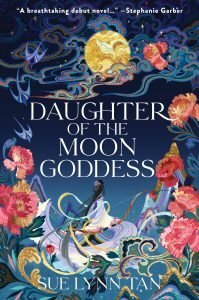 It took me a little while to get settled with this story – for the first third or so, I felt like Daughter of the Moon Goddess was like many of the fantasy novels inspired by fairy tales I’ve read, and it felt predictable. Especially early on, many of the events felt a bit too convenient, which meant I found myself rolling my eyes at the book. But as the story went on, I found myself more and more immersed, and ended up falling for it. By the end, I was in love. I’m very happy to say that my first impression of this one was wrong and that it really comes into its own after the setup is done and Xingyin can start establishing herself as a person rather than trying to carve her place apart from her mother.
It took me a little while to get settled with this story – for the first third or so, I felt like Daughter of the Moon Goddess was like many of the fantasy novels inspired by fairy tales I’ve read, and it felt predictable. Especially early on, many of the events felt a bit too convenient, which meant I found myself rolling my eyes at the book. But as the story went on, I found myself more and more immersed, and ended up falling for it. By the end, I was in love. I’m very happy to say that my first impression of this one was wrong and that it really comes into its own after the setup is done and Xingyin can start establishing herself as a person rather than trying to carve her place apart from her mother.
Daughter of the Moon Goddess is well-written, poetic, and lyrical. It is also an action-packed story with a very slow-burn romance. I loved to see the relationship between Xingyin and her prince develop and steer away from the instalove that it seemed to pivot towards in the beginning. Oh, and I should mention the dragons. There are some pretty epic dragons in this story and to be honest, dragons always make books better in my opinion.
All in all, this feels like a popcorn-y crossover fantasy with some smart aspects that ultimately takes some time to really come into its own. Once it does, it sucks you in and makes you enjoy the intricacies of the worldbuilding and Chinese mythology background in a more traditional Epic fantasy setting, which I think will make many readers enjoy it. And it doesn’t hurt that both the UK and the US editions of Daughter of the Moon Goddess are among the most stunning books to be released in early 2022, either.
Read Daughter of the Moon Goddess by Sue Lynn Tan
The post REVIEW: Daughter of the Moon Goddess by Sue Lynn Tan appeared first on Grimdark Magazine.
November 17, 2021
REVIEW: Road of Bones by Christopher Golden
The Road of Bones is the nickname for the Kolyma Highway, or R504, in the eastern part of Russia. It contains sections that are some of the coldest places on earth, reaching below 50 Celsius in January. It got its name from the bones of the dead who died building it—largely gulag labour.
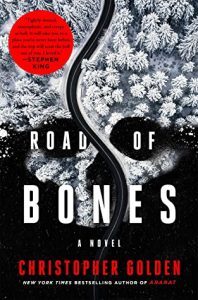 The horror author Christopher Golden used this backdrop for his new novel, Road of Bones. To be clear, while the historical atrocities are mentioned, they are not the main focus of the book. There’s nothing wrong with that choice, of course, and the book instead pulls its tension from the very real dangers of the environment, subzero temperatures, isolation, and the sheer distance between places in the frozen places of the world.
The horror author Christopher Golden used this backdrop for his new novel, Road of Bones. To be clear, while the historical atrocities are mentioned, they are not the main focus of the book. There’s nothing wrong with that choice, of course, and the book instead pulls its tension from the very real dangers of the environment, subzero temperatures, isolation, and the sheer distance between places in the frozen places of the world.
Felix Teigland and Jack Prentiss are friends with a plan. They are driving along the Road of Bones to create a proof-of-concept for a TV show they can sell. They pick up their guide, Kaskil, and further along the road they pick up a stranded woman whose car had broken down, named Nari.
Prentiss stared at this woman, her eyes alight with intelligence, and realized they had saved her life just by coming along when they had. Nari seemed unfazed and unimpressed, as if dying from engine trouble was no more worrisome a road hazard than a flat tire. A flat tire would have killed her just as surely, Prentiss thought.
One of the strengths of this short novel is how fast the characters are developed without anyone feeling like a sketch of a character. They all feel fleshed out through their relationships and dialogue very quickly. An early scene discusses how Teig and Prentiss are great friends because they’re both mercurial in their moods, and they both understand that about each other. Their dialogue has an easy, lived-in feeling. Kaskil’s reaction when Prentiss and Teig call him ‘kid,’ thinking he’s asleep, is also effective at making him more than just the guide. It’s integral in any horror novel to care about those who are put into such peril, and Golden nails it with almost every character.
The sole exception to that is Una. She’s a child, and a near catatonic survivor of something that emptied out Kaskil’s hometown. While Teig’s protective instincts towards her adds to his character, she intentionally feels distant and unknowable.
“Hey, mate, listen,” Prentiss said. “Don’t let your imagination run away. We don’t know what’s happened. The whole town’s empty, which makes me think they were evacuated. Wherever they are, everyone’s gone together, which means your family are okay, yeah?”
Kaskil turn to lock eyes with him, unconvinced.
“There are open doors all over town,” Kaskil said.” Where would they ever need to go so quickly that they would leave their doors open. That they would leave dinner on the table?”
This section is where the plot of the book really kicks in. When they’re searching through the area, they’re attacked by wolves and stranger things, and forced to flee.
The rest of the book is them trying to escape, heading back the way they came. These wolves are capable of keeping up with a speeding car, and they’re not the only force out there. The story tightens and gets tenser as it goes on, whether they’re trying to flee in a car on a frozen road where a single crack in the windshield would make them die of exposure, or trying to hole up in one of the few homes along the road.
The specifics of what is after them is explained, but not deeply. That matches the characters, who have no idea what they’ve stumbled into. What they piece together is sketchy and haphazard, but Teig and Prentiss are outsiders, lost and operating without much cultural awareness even if they weren’t dealing with supernatural entities.
With fantastic character work and a relentless pace, Road of Bones is a tense, thrilling horror novel, and one that will put a chill into your bones.
Read Road of Bones by Christopher Golden
The post REVIEW: Road of Bones by Christopher Golden appeared first on Grimdark Magazine.
November 16, 2021
An Interview with Neal Stephenson
Thirty-odd years ago, Neal Stephenson changed science fiction forever with his novel, Snow Crash. The language used in the story such as Avatar representing the human form used online, or Metaverse as an online virtual environment, are still used today.
 Furthermore, aside from its influence on computer culture, many lovers of science fiction, myself included, got their start in the genre with Snow Crash. We were moved by both the fantastical nature, the Sumerian language as a programming language, and the plausibility of Snow Crash, mega-corporations battling it out. We have since moved on to one of Stephenson’s other many and varied science fiction novels. Ones that span a wide range of subjects, from rampant nano-technology to the preservation of Homo Sapiens. In essence, there are books for every type of reader in his catalog.
Furthermore, aside from its influence on computer culture, many lovers of science fiction, myself included, got their start in the genre with Snow Crash. We were moved by both the fantastical nature, the Sumerian language as a programming language, and the plausibility of Snow Crash, mega-corporations battling it out. We have since moved on to one of Stephenson’s other many and varied science fiction novels. Ones that span a wide range of subjects, from rampant nano-technology to the preservation of Homo Sapiens. In essence, there are books for every type of reader in his catalog.
Stephenson is releasing his latest novel, Termination Shock, on November 16th. It takes on climate change as a global and very present challenge to the human race. One whose rampant effects reach every part of the globe. He paints a very plausible and well-researched picture as always. He was kind enough to take some time to answer some of our questions regarding his past writing, science, technology, climate change, and his newest novel.
[GDM] You come from a family of scientists. Did this have a direct impact on how you interpret the world? Or, did you find your way into science, and by extension, speculative and science fiction on a different path?
When you’re a kid, you think that where you grow up is normal. Not until you leave home and see how other people live do you come to understand that “normal” is different for everyone. So for me “normal” was living surrounded by scientists and engineers, both in my family and in the town where I grew up–which was dominated by a science and technology university. This definitely shaped the way I think about things to this day, I’m an empirical scientific rationalist to the core.
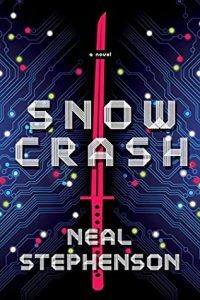 [GDM] You were on Obama and Bill Gates’s summer reading list, which is a spectacular honor. What was that like for you?
[GDM] You were on Obama and Bill Gates’s summer reading list, which is a spectacular honor. What was that like for you?
That news didn’t hit until a few months after the book came out and so it was kind of a slow realization–by that point I was absorbed in another project and wasn’t really tracking day-to-day events related to the previous book. When it sunk in it felt a bit surreal. You have to keep in mind that writers just basically sit at home minding their own business most of the time and so there’s no overt hoopla around these things. No one shows up at your door with a brass band. It’s just more pixels on a screen.
[GDM] Are there any “geek culture” things that excite you? Are you a fan of any of the franchises or series out there?
The overall megatrend–which is so slow and relentless that it’s easy to lose sight of–is the way that geek culture has come to dominate popular culture to an extent that the fandom of, say, the 1960s could never have dreamed of. No one, even as recently as a couple of decades ago, could have anticipated the ascendancy of Marvel Comics Universe or of video games as cultural phenomena.
Currently I’m interested in game engines as culture media for new creative work.
I have a soft spot for anyone who is trying to break new creative ground, and am grumpy when I see old things being rebooted. Mostly that’s because I’m thinking about the decision-making process within studios that leads to such projects being funded.
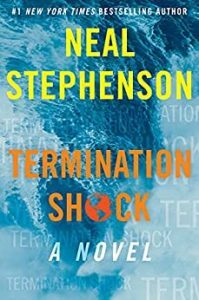 [GDM] It has been 30+ years since you wrote The Big U. Obviously, the publishing side of writing is vastly different, but has your story creation process changed between The Big U and now Termination Shock?
[GDM] It has been 30+ years since you wrote The Big U. Obviously, the publishing side of writing is vastly different, but has your story creation process changed between The Big U and now Termination Shock?
The big change is just having enough word count under my belt that I’m able to generate higher quality first draft copy and not have to spend as much time going back over what I wrote and fixing rookie mistakes.
[GDM] I watched a video from 2006 where you talked about your process of writing. You started with a pen, writing longhand. Do you write with a pen still? What about writing with a pen helps your creative process? Do you have a favorite pen type?
To the previous point, writing longhand (which, yes, I still do) generates higher quality first draft copy because it’s slower. It’s also just more flexible for editing, I can cross a word out faster than I can select it with the mouse and hit “backspace.” I use a few different pens and inks, no particular preference. I rotate pen and ink color from one day to the next so I can see where the breaks happened. I use finer nibs and different colors for editing.
[GDM] In the vein of the form versus function argument, are your books created first around a central idea, such as the moon exploding, then fleshed out with a narrative and characters. Or, do you have an idea of characters first and a basic storyline that you then insert a broader central idea into it?
It can go either way, but the key thing is that you have to have a yarn. A good story you can tell. There are multiple ways to get there and so for me the answer is different with every book.
[GDM] Are you tired of dystopias? Do current dystopias in film and books serve the same social purpose as dystopias did in classic science fiction?
I first realized that dystopias had jumped the shark a number of years ago when I was browsing for something to watch on Apple TV and saw a whole category devoted to “future dystopias.”
[GDM] You often have tangential information in your books that, while not directly related to the story beats, offer the reader information that helps build a broader view of the story’s main idea or for specific characters in it. How do you decide the level of complexity for tangential information? There are quite a few deep rabbit holes that a reader can dive into in any of your books.
It’s a storytelling technique that can be consciously applied in a number of different ways. Probably the best known example in my work is the Cap’n Crunch digression in Cryptonomicon. While on one level it’s a complete digression from the ostensible plot of the book, it does convey information about how this character perceives the world, and helps to set a scene in a concrete and almost palpable way.
In other cases, such digressions can be used to set the stage for future events in the plot. If you learn a little about the physics and engineering behind what is going on in the story, you’re primed for developments that may come along a few pages or chapters later.
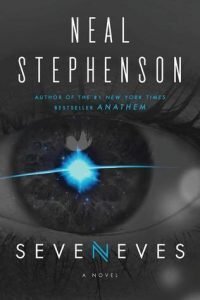 [GDM] Speaking of tangential asides, do you have a favorite rabbit hole you dove into for any of your books?
[GDM] Speaking of tangential asides, do you have a favorite rabbit hole you dove into for any of your books?
I have a soft spot for the wisdom tooth extraction bit in Cryptonomicon.
[GDM] There is a tradition in early science fiction to be predictive. For instance, 2001: A Space Odyssey predicted Face Time, Fahrenheit 451 predicted earbuds, and Neuromancer predicted the internet. Due to the speed at which technology is changing, is expecting a science fiction writer to predict where science and technology are going now an impossibility?
It’s generally not about prediction. It’s talking about the present through the lens of an imagined future that will probably never happen.
[GDM] You have a new book coming out this month, Termination Shock. Could you tell us a bit about it?
The title refers to a hypothetical catastrophe that could happen in a case where someone intervened in the climate but then stopped doing so, causing the climate to snap back suddenly to what it would have been without the intervention. In my story, a rogue billionaire takes unilateral action to intervene in the climate by using a stratospheric veil to bounce back part of the sun’s energy and cool the planet. This is already a fait accompli at the beginning of the book and so most of it is about the geopolitical reaction to what this man has done. Some people are in favor of the intervention, others opposed, depending how it alters the climate of their part of the world.
[GDM] People talk about climate change through a political framework. Was it challenging to write a story that toes the line between the two polarized sides?
The answer to that problem is to show realistic characters having realistic arguments about it–which is what would actually happen!
[GDM] Individuals tend to boil down climate change down to a simple idea when it is not. Is it possible to have useful conversations regarding this issue? Is it a problem caused by social media and shortening attention spans?
The world’s reaction to COVID–which unfolded as I was writing this book–showed us that it’s impossible to get many people to believe in the existence of a disease that is placing them and their loved ones in immediate danger and causing hundreds of thousands of people to drop dead all around them. Trying to communicate about human-caused climate change is far more difficult than that, given that the consequences are mostly far away and detectable only by scientific instruments and statistical analysis. It would be difficult to get people to understand these facts even if social media weren’t pouring highly optimized disinformation into their heads.
[GDM] One of the main plot points of Termination Shock is the idea of a rogue person doing a significant geoengineering event. It seems like this type of scenario is the only way we will get something done?
The time will probably come when some country, somewhere, will make the determination that it’s in their national self-interest to intervene in the climate through geoengineering. At that point, I don’t see why they would hesitate to take such action. Many countries routinely spend billions of dollars developing nuclear weapons because they have made up their minds that it’s essential for national security. Putting some stuff in the stratosphere would be much easier and cheaper than that. So, I doubt that it will be a lone billionaire but I wouldn’t be surprised to see a national government attempt it.
Read Termination Shock by Neal Stephenson
The post An Interview with Neal Stephenson appeared first on Grimdark Magazine.
November 15, 2021
REVIEW: Empire of Blood and Sand by Alister Hodge
Empire of Blood and Sand by Alister Hodge is a riotous dark fantasy which satisfied my thirst for a grimdark fix with flavours befitting of the genre.
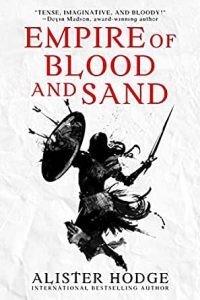 Right from its well-hewn opening, Empire of Blood and Sand had me hooked. The first scenes contain that fine blend of gore, intrigue, and character motivation that we are all accustomed to. Yet this piece still manages to innovate. There’s the notable use of quasi-historical texts on the Scalzini genocide which serve as an efficient world building technique. There’s the well-crafted setting of Kalech which struck a nice tone. I have read enough epic fantasy to know when something feels too familiar, too fast but this author managed to craft the backdrop very nicely. But most of all I was hooked by the original use of Kalech’s bestiary, which sets up a nice interplay with the Scalzini race. Opening battle with a giant centipede anyone?
Right from its well-hewn opening, Empire of Blood and Sand had me hooked. The first scenes contain that fine blend of gore, intrigue, and character motivation that we are all accustomed to. Yet this piece still manages to innovate. There’s the notable use of quasi-historical texts on the Scalzini genocide which serve as an efficient world building technique. There’s the well-crafted setting of Kalech which struck a nice tone. I have read enough epic fantasy to know when something feels too familiar, too fast but this author managed to craft the backdrop very nicely. But most of all I was hooked by the original use of Kalech’s bestiary, which sets up a nice interplay with the Scalzini race. Opening battle with a giant centipede anyone?
Hodge also manages to sketch his characters effortlessly. There are two point of view characters. As a heroic soldier unable to resist the magnetic pull of battle, Jael Crowfeeder is familiar territory for the connoisseur of grimdark. But the portrayal is intriguing enough to keep interest within his firm sword arm. I found myself rooting for this flawed warrior and captivated, needing to know more about his tragic lost heritage. Pyx is a fitting companion who blends nicely in whilst being a lynchpin at key plot moments. Larika is our other viewpoint, a strong warrior princess whose struggle to hold her tumen together in the face of unwinnable odds whilst battling a threat to her succession was a fitting counterpoise to Jael’s journey.
The themes and tropes at play in Empire of Blood and Sand are well-known; ones that are a natural part of the genre. They have become so because these paths are entertaining with plenty of life left in them when in the hands of authors such as this.
This is a gloriously grisly grimdark feast. It is fast, brutal, and hellishly entertaining. It is a novel which I wouldn’t hesitate to recommend to anyone whose appetite is savouring for a fix of grit which can be devoured in a few sittings. The world building is clever, complex, and yet doesn’t need an accompanying encyclopaedia. Empire of Blood and Sand has left me wanting to know where the journey will take me next. And as luck would have it, I understand that Hodge is at work on a sequel.
Read Empire of Blood and Sand by Alister Hodge
The post REVIEW: Empire of Blood and Sand by Alister Hodge appeared first on Grimdark Magazine.
November 14, 2021
REVIEW: Godsgrave by Jay Kristoff
Godsgrave is the second book in The Nevernight Chronicle by Jay Kristoff. It has enough similarities to its predecessor Nevernight that I think those who enjoyed that offering would also like this. There are technical aspects of the book that are unchanged, for example it has a dual narrative where a past event is indicated by the use of italic font and the unknown chronicler uses footnotes to provide the reader with extra information. However both of these tools are used a lot less than they were in Nevernight. Style wise though, Godsgrave is still a tome full or black humour, bloody gore, and is a cleverly woven narrative that ends with a cliff hanger so tense and unexpected that I literally shouted at my copy of the book in frustration.
 Godsgrave is a dark fantasy set in the unique world of the Republic of Itreya, which is similar to Ancient Rome in its political structure, and serves as a biography to the protagonist, a now eighteen year old assassin Mia Corvere. It picks up shortly after the climax of Nevernight and follows Mia in her early career as a Blade in the Red Church of Our Lady of Blessed Murder. Jay Kristoff opens the novel with a ‘Dramatis Personae’ of the characters, which is a great refresher if you are not reading this immediately after Nevernight, and serves as a prologue before the novel properly begins. The first chapter is in a roman style font, indicating that it is a contemporary storyline, and the early italicised flashbacks explain what we have “missed” in the interlude.
Godsgrave is a dark fantasy set in the unique world of the Republic of Itreya, which is similar to Ancient Rome in its political structure, and serves as a biography to the protagonist, a now eighteen year old assassin Mia Corvere. It picks up shortly after the climax of Nevernight and follows Mia in her early career as a Blade in the Red Church of Our Lady of Blessed Murder. Jay Kristoff opens the novel with a ‘Dramatis Personae’ of the characters, which is a great refresher if you are not reading this immediately after Nevernight, and serves as a prologue before the novel properly begins. The first chapter is in a roman style font, indicating that it is a contemporary storyline, and the early italicised flashbacks explain what we have “missed” in the interlude.
A key theme of Godsgrave continues to be Mia’s thirst for revenge and the deaths of Consul Scaeva and Cardinal Duomo. The central plot follows this mission as she abandons her position with the Red Church and sells herself in to slavery for a chance to assassinate them both when they appear at a gladiator tournament in the capital city Godsgrave, from which the novel takes its title. In tandem with this Mia undergoes some major emotional developments in the novel. She continues to process her grief at the loss of her family, but slowly starts to trust and form new relationships whilst simultaneously questioning the benefit of them and doubting their verity. This is unsurprising given that Mia has been trained to have marks not friends. The final sub plot, which I hope will form a bigger part in the concluding novel of the trilogy, is the origins of the darkin, the purpose of them, and their shadowy accomplices. Although Jay Kristoff drip feeds us with additional details about these shadow hungry beings, there remains more questions than there are answers.
I must admit, I spent a significant proportion of Godsgrave being frustrated. I had loved the previous setting in Nevernight of an assassin school and absolutely expected Godsgrave to follow in a similar vein, with the Red Church being the base from which Mia planned and executed her epic revenge strategy. To find myself instead following Mia to a gladiator collegium after she had deliberately sold herself in to slavery was entirely unexpected and threw me for a loop. Although it did not feel out of place in that pseudo Roman world to have gladiators and tournaments, I wanted more murder school and to learn more about the other Blades Mia had graduated with, not have a new host of characters and a new location. It felt like a huge jarring tangent moving away from there and where I thought she needed to be going. I simply could not work out how on earth it was not a huge waste of time. I was going to write off Godsgrave as a disappointing middle book and although it still had all the things I love in novels generally, it did not have as much of the things I had loved in Nevernight.
However I should have trusted Jay Kristoff because Godsgrave is brilliant by the end. He has woven so many conspiracies into the plot of Godsgrave that it is practically a literary cross stitch and the reveals were absolutely worth the journey. I feel that the purpose of Godsgrave is to give Mia an exquisite character arc – she is not just simply an emotionless assassin and in this novel we witness her working through some of her trauma as well as simply growing up. I do not think we would ever have thought Mia childish given what we know the character has gone through, but in Godsgrave we get to see new sides to her and I am excited to see how she continues to grow in the ultimate chronicle Darkdawn. The host of new characters are well developed and some are entirely too likeable given that Jay Kristoff openly admits he does not believe in happy endings and has no qualms about killing off characters in ingeniously violent ways.
I was genuinely getting tense as I neared the end of the book because I had no idea where it was going but was aware of how few pages remained. Those final few chapters absolutely changed my mind about Godsgrave and made me love what Jay Kristoff has created. They were a satisfyingly epic conclusion to the novel and although it had taken me a while to get in to the flow of these new parts of Itreya and the journey it was taking us on. The final chapter made me hate him. The twists in this last chapter were utterly unexpected, but entirely plausible, and in the ‘dicta ultima’ at the end of the novel Jay Kristoff made absolutely clear through the voice of the chronicler that he knew damn well what he has just done and how the reader now feels. He is a literary sadist and there is only one novel left in which he can answer the questions that remain. Godsgrave is not a disappointing middle novel, it might not take you on the journey you were expecting, but by the finale it is clear that it is an exceptional grimdark creation.
Read Godsgrave by Jay Kristoff
The post REVIEW: Godsgrave by Jay Kristoff appeared first on Grimdark Magazine.




